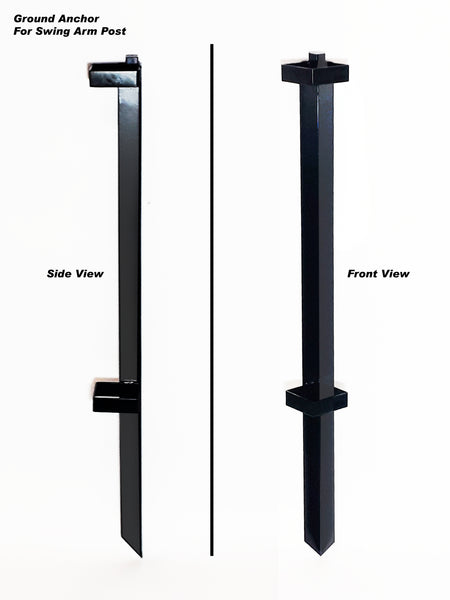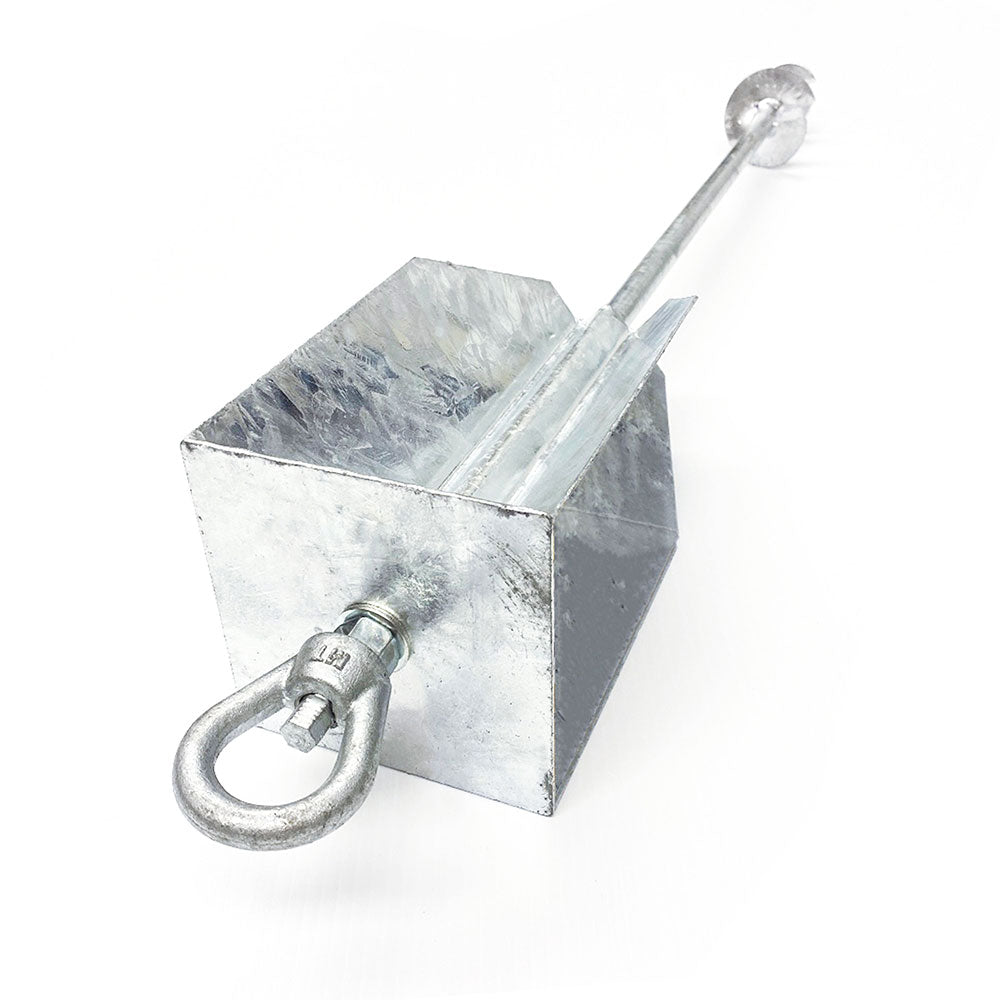Breaking Down the Various Options of Ground Anchor Systems for Different Applications
Breaking Down the Various Options of Ground Anchor Systems for Different Applications
Blog Article
Discover the Different Sorts Of Ground Support for Your Next Project
From auger anchors, which excel in varied dirt conditions, to risk supports developed for short-term installations, the options are countless. In addition, concrete and screw anchors existing special benefits in certain circumstances, while deadman anchors are customized for applications needing resistance to lateral pressures.

Auger Anchors
Auger supports are a popular selection in different building and landscaping tasks because of their distinct style and efficient securing capabilities. These supports contain a helical screw-like shaft that is driven right into the ground, permitting a secure and steady hold. The spiral style promotes simple installment and takes full advantage of resistance against side forces, making auger supports particularly reliable in applications such as fencing, momentary structures, and disintegration control.
The installment process of auger anchors is reasonably uncomplicated. They can be by hand or mechanically set up, depending on the size and called for depth. This versatility permits their usage in diverse dirt conditions, from sandy to clayey terrains. Additionally, auger anchors can be conveniently eliminated and recycled, which includes in their cost-effectiveness and sustainability.
One of the significant advantages of auger supports is their capability to disperse loads uniformly across the surrounding dirt, minimizing the risk of soil disruption and minimizing environmental effect. Additionally, they are much less vulnerable to loosening or heaving over time compared to traditional securing techniques. Subsequently, auger anchors are an excellent option for jobs calling for dependable and durable anchoring options.

Risk Anchors
When it concerns safeguarding frameworks in a variety of outside applications, risk supports offer a trustworthy and simple remedy. These anchors are normally built from durable products such as steel or aluminum, developed to withstand environmental stress and anxieties while giving ideal stability. Their straightforward style allows for quick setup, making them an optimal selection for irreversible or momentary anchoring demands.
Stake anchors are specifically valuable in securing camping tents, covers, and various other lightweight structures against wind and weather condition. They operate by being driven into the ground at an angle, producing a solid hold that resists pull-out forces - Ground Anchor. The efficiency of stake anchors relies on a number of variables, including soil kind, wetness material, and the angle of installment
For included protection, many stake anchors come with accessory factors for ropes or bands, allowing for tension adjustments as essential. In applications such as landscape design or construction, they can efficiently maintain devices or frameworks on uneven surface. On the whole, stake anchors give a versatile and cost-efficient service for securing various outside installations, making them a recommended choice for service providers and do it yourself enthusiasts alike.
Concrete Anchors
Concrete anchors give a durable option for securing structures to concrete surfaces, ensuring security and safety and security in different applications. These supports are crucial for tasks ranging from domestic constructions to large-scale commercial installations. They can be found in various types, including expansion supports, glue anchors, and this page undercut supports, each designed for certain tons needs and environmental problems.
Expansion anchors count on mechanical mechanisms to grip the concrete when mounted. They are optimal for tool to durable applications. Glue anchors make use of high-strength epoxy or material to bond the anchor to the concrete, offering exceptional load-bearing capabilities, specifically in broken concrete situations. Undercut supports create a special form within the concrete, supplying extraordinary holding power, specifically in applications where tensile tons prevail.
Choosing the proper concrete anchor involves thinking about variables such as the weight of the lots, the condition of the concrete, and ecological conditions. Correct installment methods are essential to make certain ideal efficiency and dependability. When implemented appropriately, concrete supports significantly improve the structural integrity of different jobs, making them vital in modern building and construction practices. Understanding the particular needs of your job will certainly aid in picking the best kind of concrete anchor for the job.
Screw Anchors

Screw anchors are a versatile securing option that can be successfully utilized in a selection of applications where typical concrete supports might not be sufficient. These anchors include a helical style that permits them to be conveniently driven right into the ground, making them excellent for use in dirt and various other substratums. Their one-of-a-kind structure provides excellent holding power and resistance to pull-out forces, making them ideal for countless projects, from landscaping to structural support.
Among the primary advantages of screw anchors is their simplicity of installation. They require marginal devices and can usually be installed without the requirement for excavation, which conserves both time and labor expenses. In addition, screw supports can be gotten rid of and recycled, using a sustainable remedy for short-lived applications.
Screw supports are specifically advantageous in locations where dirt problems are challenging, such as sandy or loose soils. Their capacity to be mounted at varying midsts permits personalization based on specific task demands. In general, screw anchors offer a efficient and reliable securing method, making them an outstanding choice for designers and contractors seeking effective solutions for their projects.
Deadman Anchors
Deadman anchors act as a durable solution for maintaining frameworks in challenging conditions, especially where conventional anchoring methods might fail. These anchors include huge, hefty objects hidden underground, which produce resistance versus lateral pressures. The layout usually entails a straight element, such as a block of concrete or a metal plate, buried in the Full Article soil, to which wires or bands are affixed.
The efficiency of deadman supports exists in their capacity to distribute lots over a larger area, lowering the danger of failure in unpredictable dirt conditions. They are especially advantageous in applications such as retaining wall surfaces, temporary structures, and slope stabilization, where soil motion can compromise the stability of the framework.
Installment of deadman supports calls for cautious preparation to ensure they are positioned at the proper deepness and orientation, optimizing their load-bearing capability. While they might call for more labor and material than light-weight supports, their integrity in unfavorable problems makes them important for lasting tasks. Moreover, deadman supports are flexible and can be adjusted to numerous applications, making them a best selection for designers dealing with one-of-a-kind difficulties in their projects.
Verdict
Auger anchors succeed in varied soil problems, while stake supports suit temporary applications. For concrete surface areas, expansion and glue anchors offer reputable options, and screw supports use convenience in tough surfaces.
In addition, concrete and screw anchors present one-of-a-kind advantages in particular situations, while deadman supports are tailored for applications requiring resistance to lateral forces - Ground Anchor.Auger supports are a prominent selection in various construction and landscape design jobs due to their unique style and effective anchoring capabilities. They come in different kinds, including expansion supports, sticky supports, and undercut anchors, each created for particular load requirements and environmental problems
Sticky anchors make use of high-strength epoxy or material to bond the anchor to the concrete, offering premium load-bearing capacities, especially in broken concrete circumstances. On the whole, Bonuses screw supports offer a reputable and effective securing approach, making them a superb choice for designers and contractors looking for effective solutions for their jobs.
Report this page